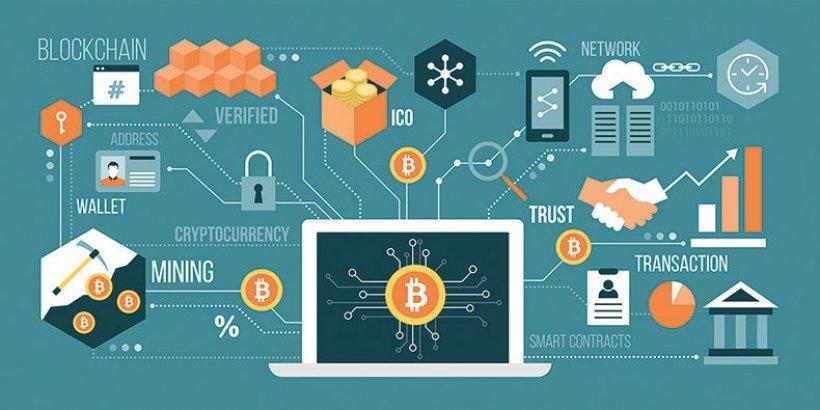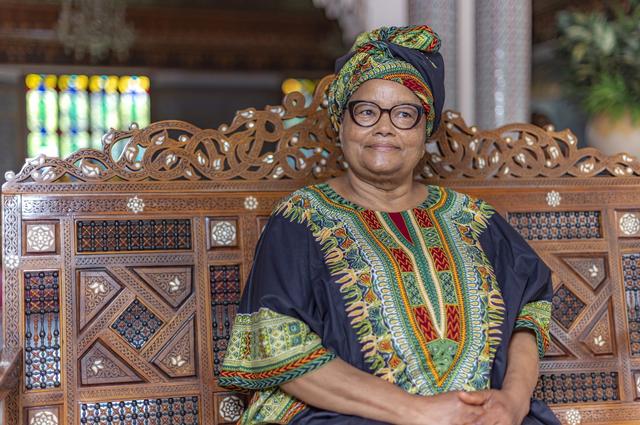Blockchain to bring real added value to the real estate sector
The blockchain to bring a real added value to the real estate sector in abonners' abononpasscréer my account connect research magazine magazine newsletters services of offers for surfaces of the workfditionskheoxfournants btpwebinarsindices-indexcstructions and talentsmon accountsmesmematesdirect
After the realization of the first French and European sale via Lablockchain on June 25, 2019, this technology becomes fashionable and makes the front page every week.But where does this technology come from? What are the concrete applications that can be made of real estate?How can it interact with artificial intelligence and the Internet of objects?To summarize, it is often said that the Internet has made the communication of communication, well, for Lablockchain, we must speak of a revolution of confidence.
The recent enthusiasm for blockchain testifies to real market membership towards this technology.However, it is more than a year before this fashion effect that blockchain showed its fundamental interest in France and more broadly in Europe.On June 25, 2019, the first real estate transaction on the blockchain took place in France produced by the start-up Equisafe.A mansion located in Boulogne Billancourt (92) was exchanged via this technology for a total amount of 6.5 million euros in 30 minutes for additional costs around 150 euros.The sale first followed a classic sales process validated by the signing of a notarial act marking the transfer of ownership of the building to a simplified joint -stock company (SAS).The Equisafe investment platform then recorded on the Blockchainla SAS as a transmitter before dividing it into a hundred digitalized shares called tokens or tokens with a unit value of € 6.50.All of Cestokens were then sent by SAS to the promoter SAPEB Immobilier assisted by the promoter Valorcim.
Of course, such an operation requires significant preparatory work due to the innovative nature of technology.However, what should be noted with this transaction is that it shows that the future of the real estate transaction will probably be linked to the blockchain.The promises of this technology are diverse.It allows, among other things, to reduce the costs and transaction deadlines, to democratize real estate investment and home ownership and to optimize goods management.
Blockchain Geek technology for geeks born before the 90s
Lablockchain is actually a technology studied for several decades.First initiated by Desmathematicians and Geeks, Lablockchain wants to protect data from Internet users.These people constitute the movement of the cypherpunks.The name of this informal group, bringing together persons interested in cryptography, comes from the decipherous contraction, encryption in English and punk for cyberpunks-science fictionalist.
Faced with the rise of the Internet in the 1990s, these visionaries have already understood in this time that the Internet was likely to be dominated by a tiny number of companies capable of collecting, managing and analyzing an astronomical amount of data on its users.The need to bring out a system capable of functioning without risk being corrupted, modified, deleted, monopolized then becomes obvious.This is how the notion of Internet decentralized emerges.
To fully understand this notion of decentralized Internet, let us take the following example.Buying a newspaper from a tobacconist with liquid requires transaction actors to know only two information: does the buyer have funds to buy the newspaper, does the seller have a newspaper?The problem on the Internet is that it is necessary to provide a plethora of information to intermediaries to make an online payment: email at least, but often also an address, a name, a first name, etc..Why should we provide all this information when the liquid purchase of a newspaper remains so simple?
Bitcoin, the peak of the blockchain
Over time and over the course of various experiments the decentralized internet will be embodied in the financial world: with the very famous Bitcoin.It is really in October 2008 that this digital currency was born.It is the fruit of multiple experiments of 100 % digital currencies and constitutes their successfuls because its creator Satoshi Nakamoto, whose identity is not known, has managed to solve a mathematical problem that no currency had resolved before: the'lack of intermediary on online transactions.Thus, thanks to Bitcoin it is now possible to carry out a reliable and secure transaction without the presence of intermediaries.This intermediary is replaced by a mathematical function which ensures the smooth running of the transaction and guarantees its integrity.Thus, the transaction can take place without intermediary and therefore without providing amounts of information which ultimately should have no connection with the very root of a transaction.
Bitcoin has two characteristics.It is possible to consult in real time all the transactions made with Bitcoin in the form of an open book.In addition, it is the members of the Bitcoin network who ensure by themselves via their machine, the survival, the functioning of the network.Bitcoin thus constitutes a financial revolution in the world of the Internet where everyone can carry out transactions in peer to peer (P2P), that is to say from particular to particular.
This success has proven to be proof of concept commonly known as POC or Proof of Concept on the world of start-ups.If it is possible to carry out financial exchanges without intermediary, why would the exchange not concern something other than currency.This is how the blockchain emerges from Bitcoin.But it takes a real dimension with Ethereum in July 2015.
DUBITCOINAUSMART Contract
Ethereum is the fruit of the work of the Vitalik Buterin programmer, who wanted to extend the blockchain capacities to store programs in addition to the data as well as to facilitate, check or enforce the negotiation or execution of the contract Contract Contract.

Smart contracts or intelligent contracts are computer protocols that facilitate, check and execute the contract of its negotiation in its execution.LESMART Contract is the translation into computer code of negotiated contractual clauses.It is therefore no longer only money that is transferable but everything related to the contractual.Among other things, it is possible to propose the automatic contract execution if certain conditions are validated.
Ethereum also made it possible, among other things, to bring out the concept of digital assets commonly called "token".The latter allow you to register a tangible asset such as a building, an electrical consumption, or an authentication or intangible certificate such as the rights and duties of a shareholder or a digital collection card in the blockchain and thus transfer it100 % fluid and secure to anyone without intermediaries.
Thus, the (R) Blockchain evolution is in three points:
- A transactional revolution was born by Bitcoin which allows you to exchange in P2P without intermediaries.The latter thus makes it possible to prove a certain technical feasibility: the blockchain was finally born;
- a contractual revolution with the emergence of intelligent contracts by Ethereum;
- a value revolution by the possibility of digitally registering assets of all types in the blockchain.
To summarize, it is often said that the Internet constitutes the revolution of communication, and well, for Lablockchain, we are talking about the revolution of confidence.
Let us now briefly be interested in concrete applications in real estate.It should be noted that they cannot be exhaustive and that many other uses exist.Thus, the examples described below seem to be the most evocative.
Reduce transaction costs and deadlines
It is well known, the real estate transaction requires the presence of many actors: real estate agents, connecting platforms, notaries, banks, insurance, real estate experts, experts in real estate diagnostics, land advertising service, etc..The latter, although they are doing an essential work to the buyer and the seller constitute significant costs within a real estate transaction.On average 10 % of the purchase price of a property are paid by the seller and the buyer to remunerate these trusted third parties in the event of a property at € 300,000.In addition, the transmise information between these multiple actors is not always complete.In addition to the cost it represents, this multitude of actors contributes to the phenomenon of information asymmetry.
The blockchain solves these problems.Thus, it can very well be imagined a blockchainpermetant to compile, within a single platform the key stages of the transaction, which would then be transparently crossed with all intermediaries.This is, among other things, what the American startup Propy realizes.The latter created a tool dedicated to real estate agents.All the evolution of the file is updated by the provision of certain information.Each real estate transaction carried out on the platform is secured on the blockchain while allowing collaboration between each intermediary of the transaction and an effective monitoring of transactions and their status.However, in the American real estate purchase system, the notary occupies a very different place than in France.But this example allows the real estate agent at the center of the transaction.Olaarchy, a French start-up, also seeks to create a similar collaborative platform articulated around the blockchain.
Will the blockchain replace the notary?
This technology today questions the interest of involving notaries to carry out real estate transactions in France and more broadly in Europe.Without going too much in detail, this myth should be removed according to which notaries "are useless" and can be deleted by Lablockchain.The profession of notary provides significant expertise in a real estate transaction, especially since today ministerial officers are able to generate authentic acts.Legally an authentic act gives a certain date to the act.In addition, the act is proof of its content.In practice, proof contrary to one of the notices of the authentic act can be reported but at the end of a complex procedure, equivalent to that of a judicial challenge for partiality of the judge.Finally the authentic act by enforceable force.Thus when the debtor owes a sum of money provided for in the contract and does not execute it, the creditor of the obligation may obtain payment without going through a judge as when it is provided with a private act.
To date, an act passed by blockchain does not present the legal effects of an authentic act.Questioned by the deputy Daniel Fasquelle (Les Républicains), about the convincing force that the government wishes to give to an act passed on the blockchain, the Secretary of State to the Minister of the Economy and Finance and the Minister of Actionand public accounts, in charge of digital, answers, on December 10, 2019 (written question n ° 22103 Jo an P.10774) that the blockchain has only to date proof status.It is thus subject to articles 1358, 1359 and 1366 of the Civil Code.Blockchain elements can validly be produced in court.It will be up to the judge to assess their convincing value.
Consequently, the future of notaries does not seem to be threatened by this technology.
Democratize investment and home ownership
In addition to securing information in a decentralized system, the blockchain allows you to create digital assets, commonly called "tokens" or tokens (see above).This technological makes it possible to register "digitally" physical assets.Concretely, a building can be registered on a blocchain with all the information characterizing it: area, height, number of apartments, materials used, construction date, etc..
Added to this faculty of registering assets, in an encrypted digital space, the possibility of splitting them into tiny parts.Indeed, a bitcoin can be split up to 10^-8 decimals, one ether up to 10^-18 decimals where the euro stops at the penny (10^-2).
Thus, it is possible to digitally register a building in a blockchain and to create individual shares representing an apartment in each building, or even several parts for the same apartment.Likewise, each asset enrolled in the blockchain can integrate particular elements such as rights and duties according to shareholder typologies.
The transaction carried out by Equisafe described in the introduction is a demonstration of this particular type of use but there are others too long to be explained in this article;For example, selling part of an asset to finance the purchase of another or allow home ownership for people unable to receive a bank loan.
The return token operation led by Equisafe and Masteos on November 6, 2019 is an example (see box).
Optimize the management of the real estate stock
Managing a housing stock is to confront every moment with potential incidents in common or private areas: roofing, facades, joinery, plumbing and many others are all elements likely to require repair, replacement, renovation or sometimessame destruction.Likewise, tenants' entries and exits in apartments and offices are elements that are necessary to know.The blockchain would allow you to register all these elements with certainty and securely.
A start-up called Syment today uses this technology to manage votes linked to general assemblies (GA) of co-ownership.During each general condominium assembly, Syment proposes to carry out an "AG voting pre -voting", to compensate for the constraints linked to the very recent distance vote.This vote will then be included in a blockchain and therefore unlatable and falsifiable.Syment also offers real estate parks managers an incident management solution, which for the moment, does not use blockchain.
To give two other fairly different examples, the start-up Olachy offers a use case using the Smart Contract (see above) in order to automate the execution of leases in the future state of completion (BEFA).Likewise, the Start-up Contractchain allows Lablockchain to know if the contract for project management signed is indeed that validated by the client generally two years earlier.
Participate in the digitalization of the sector by technological synergies
Far from being the universal solution, the blockchain can be really used if it is combined with other technologies.The French government announced on February 18, 2021 a plan of one billion euros aimed at strengthening cybersecurity in the territory and the blockchain may well be integrated into this device.
Indeed, by its very nature, the blockchain makes it possible to secure and encrypt the data transmitted whatever their nature and thus opt for another form of less centralized cybersecurity and by definition more difficult to corrupt.This aspect could make blockchain a primordial technology complementary to that of the Internet of Things (IoT) which develops connected objects such as smartphones, traffic lights, lighting etc.
Regarding technological synergies, it should be understood that artificial intelligence (AI) to function properly must assimilate a substantial number of data.Plus the models of "eating" data, the more likely they are to be performing.However, if the data ingested prove to be duplicates or false, the only AI could not detect it and the models created would thus be false.The blockchain by its very nature is capable of generating and filtering unique data reliably.In this way, the blockchain could be complementary to AI.
In reality, the combination of various technologies of this kind could concretely bring out projects of intelligent cities or smart cities.
Blockchain;IoT and IA: the future of real estate, the smart cities
Lessmart cities are by definition cities using different technologies which allow the world to bind to that of transport, lalogistics, energy, etc.., for the well-being of Seshabitants.A concrete example would be the implementation of "intelligent" red light.The presence of sensors of the road would determine the imminent traffic flow from a road crossroads for example.The functioning of the Red Verta Passage of the Fire would be optimized to streamline circulation.Of course, this simplexample cannot be limited to the global definition of intelligent cities.
Where Cisco, a company focused on digital transformation, IT and networks estimated to reach 50 billion connected objects worldwide in 2020, it seems that we have 9 billion;which is not negligible.According to the projections of the UN before the health crisis, 68 % of the world's population should live in cities by 2040.Have cities adapted to the needs of these populations thus seems to become a planetary issue.
Nevertheless, all these users and all these future connections to connected objects in the city will cause an obvious need to secure connected interfaces but also their users.In addition, connected objects collect a lot of data alone and this data is returned to a centralizing body, generally, the seller/inventor of said object and their beneficiary, if these prove to be different.These data thus collected can be stolen if the centralizing server suffered a cyber attack.
This is where the blockchain can be interesting.Indeed, by its very nature, this technology makes it possible to deport the risk over the whole of a network.Thus, if a member of the network undergoes a cyber attack, the information held by the latter will always be accessible by the other members.In 2016, it was estimated that 25 % of cybers attacks were to target connected objects 1.
Artificial intelligence could bring a significant element.Indeed, once the data has been collected by various secure objects within a blockchain, artificial intelligence could interpret this data and carry out forecasts on various aspects: urban pollution, vehicle circulation, pedestrian circulation, sunshine rate of the sunshinestreets, attendance, energy consumption, etc..
The Citiesabc project gives a concrete example of a project binding Blockchain, IoT and IA.He seeks to reference all cities in the world using pollution, circulation, education, health, etc. criteria.These criteria are fueled by data captured in intelligent cities by the Internet of Things and allow data interpretations (AI).In order to carry out this project, the Cities team ABC is working on the complete city digitalization on the blockchain: building, roads, networks, etc..Today, Hong Kong, Singapore, Amsterdam, Berlin, Copenhagen, Reykjavik, Tokyo, Paris, New York, London are in the top 10 smart cities present in the world in 2020 according to the classification "these are the 10 smartset cities inThe World for 2020 "published in Forbes on June 8, 2020.The criteria qualifying these cities of smart cities relate to the concept of "sustainability" over time: economy, environment, governance, human capital, international projection, mobility, transport, social cohesion, technologies, town planning.They have not yet reached the desired optimum level of development but are about to become examples of urbanization worldwide.
In order to provide complete effective development, smart cities will have to use AI, blockchainet IoT in order to best serve their citizens, shops and services.Concretely, the IoT will be used for data collection, blockchain to their security and AI to their evaluation and projection in time for analysis purposes.Because technological synergy does not only concern cities as a whole, use cases in construction combining blockchain and IoT require our attention.
1 Source: Ahmed Banafa, "A Wake Up Call for IoT", OpenMindbba, December 5, 2016, data from Gartner.
DéfinitionLa Blockchain ou chaîne de blocs est une technologie de création et de gestion de bases dedonnées sécurisées, décentralisées et réputéesinfalsifiables.This is one of the variations of the electronic recordings parted.
It combines three relatively old uses on the internet scale: cryptology, databases and lepeer-to-peer.
Transférer une dette par la Blockchain pour pallier l’impossibilité d’un crédit bancaireOn November 6, 2019, Equisafe and Masteos led a first technical demonstration allowing an individual to monetize his borrowing capacity with another.
Thus, Florent, lawyer on permanent contract, owns an apartment in Rennes bought on credit to make it a self -funded rental investment.
He is looking for equity to finance other projects, but does not wish to resell all of this first investment.The other actor of this transaction is Paul, free-lambing graphic designer with regular customers, comfortably earns his life and seeks to invest, but does not find a bank to make him credit.
Thanks to Lablochckain Florent Vamonetize his borrowing capacity of Paul.To do this, Florent created a simplified joint -stock company to which He sold his apartment via unatal classic unacit.This company was then divided digital a thousand detukens.Paula then bought 41 % Destokens of the company thus becoming a co -owner of Florent appearance.This will therefore have won a borrowing capacity a few clicks.
articles les plus lus







